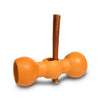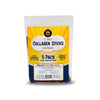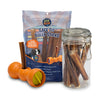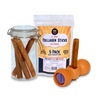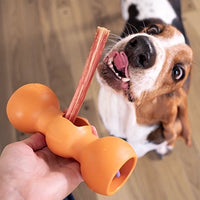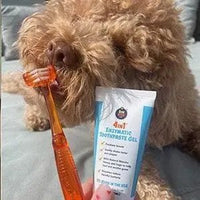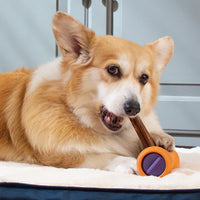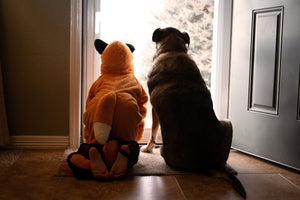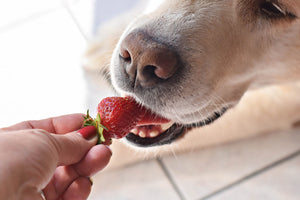Being a dog in America on July 4th must feel like the world is coming apart — at least in my neighborhood where the house-rattling, booming, popping and cracking sounds begin at dusk and carry on through the wee hours of the morning.
It’s no wonder why Independence Day, which often extends far beyond a single day to weeks of celebratory firecrackers, can cause severe stress and anxiety for our beloved pups. In fact, according to American Humane, more dogs are lost on July 4th than any other day of the year.
This is a sobering reminder to keep your dog secured in a safe location in the days leading up to and after July 4th. It’s also a good time to ensure that ID tags are both properly attached to your dog’s collar and that all your contact information is current. If your pup is microchipped, be sure to review your contact information so it is up-to-date.
Signs your dog is stressed

If your dog is unnerved by the sounds of thunder, slamming doors, or popping guns, he’s likely going to be terrified by fireworks. Signs that your dog is feeling anxious may include chewing or destructive behavior, barking, crying, or whining, trembling or shaking, excessive panting, refusal to eat, and excessive licking and/or drooling, just to name a few.
You know your dog best and sometimes signs of stress are more subtle and may be exhibited through simple posture changes or retreating to an area they don’t normally go. (Be sure to have a watchful eye on your pup as it is most often easier to be proactive in these situations.)
Understand that these behavioral signs of anxiety are common, and in most dogs will cease once the celebration is over.
How to calm an anxious dog

In addition to ensuring your dog is confined to a safe and secure environment — we don’t recommend a crate (unless the door is open and your dog can enter and leave at will) because this can make your dog feel trapped — there are steps you can take to help your dog feel as comfortable as possible. You may find that implementing one of these tips is all your pup needs, or that a combination works best.
Here are 4 calming strategies to help ease your dog’s stress during the Fourth of July:
- Classical music — In the most sound-proof room in your house, turn up the soothing sounds of Bach or Beethoven to help drown out the noise. Just be sure to close the windows to shield them from sounds going on outside. Drawing the shades will help minimize the flashes of light.
- White noise — Similar to classical music, white noise from a fan or air conditioner can dampen the sound of fireworks.
- Natural calming remedies — There are plenty of all-natural remedies that help invoke a state of calmness and these can be especially helpful during times of stress. Look for products that contain nervine herbs like organic skullcap, oat tops, chamomile, and/or valerian root. Nervine herbs are considered nerve tonics and are mildly relaxing without being sedating. We like the Tranquility Blend from Animal Essentials. Another option to consider are products, such as hemp, that work with the endocannabinoid system, which is responsible for regulating and balancing many processes, including stress response. Look for products that use the whole hemp plant, are grown using organic practices and are considered full-spectrum, such as those made by Treatibles.
- Chewing — You can also try distracting your dog with a chew toy or a chew treat. Chewing releases serotonin and dopamine, which can help your dog relax. Try a long-term variety that will engage your dog for at least 10 minutes, such as a Safe Fit™ bully stick, sized appropriately for your dog’s weight.

Remember that timing is crucial-—so keep a watchful eye on your dog and try to intervene with the tips above before she reaches a point of complete distress. With care and preparation, pet parents can ensure that July 4 is as safe, quiet and calm as possible for our dogs.
This article is for informational purposes only. It is not, nor is it intended to be, a substitute for professional medical advice, diagnosis, or treatment and should never be relied upon for specific medical advice.
Related Resources
You Might Also Like:



